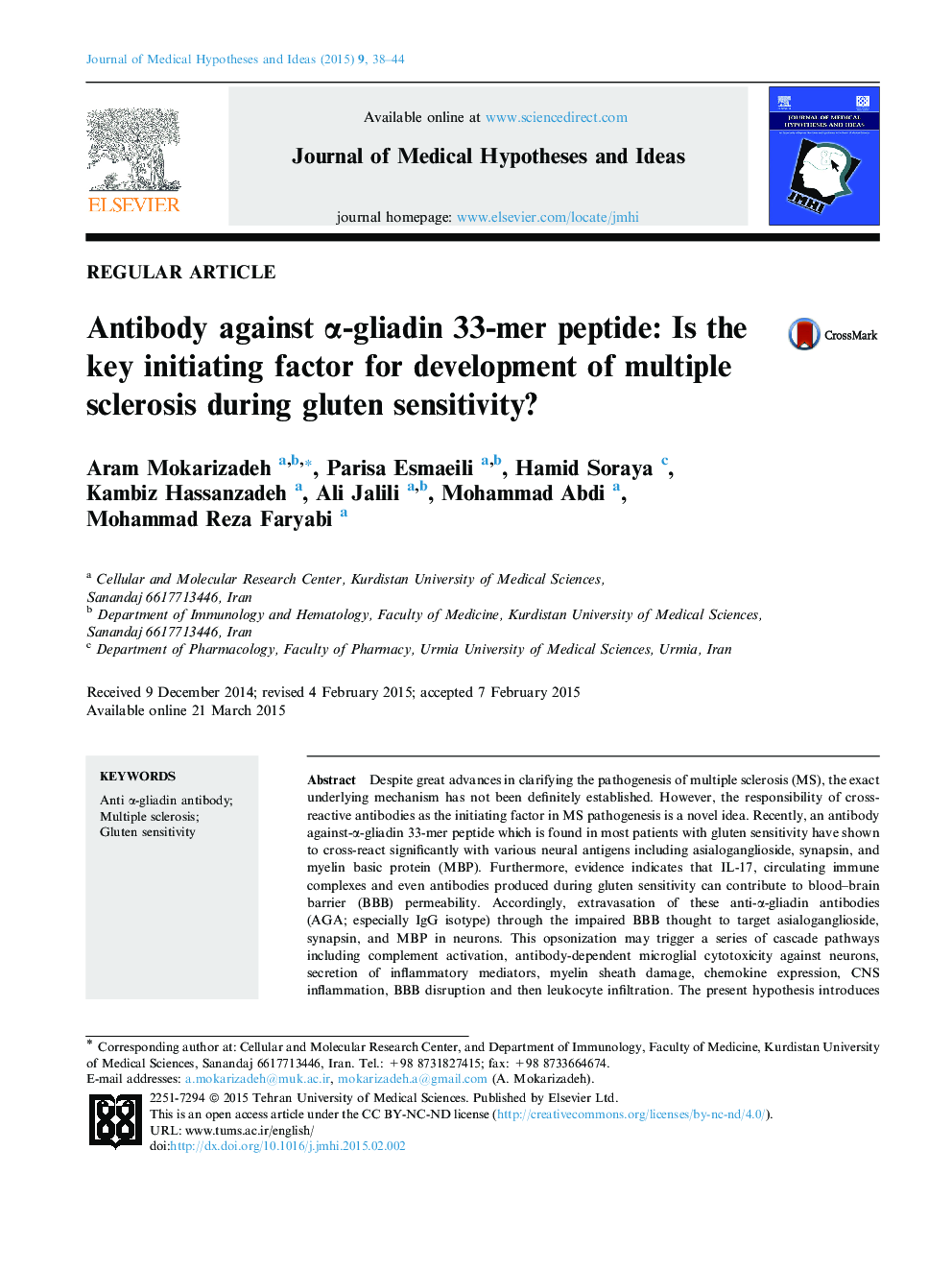| Article ID | Journal | Published Year | Pages | File Type |
|---|---|---|---|---|
| 3483001 | Journal of Medical Hypotheses and Ideas | 2015 | 7 Pages |
•Recently, antibodies against an α-gliadin 33-mer peptide have been found to cross-react significantly with some neural antigens.•Furthermore, evidence indicates that during gluten sensitivity, BBB gets impaired.•Accordingly, extravasation of these antibodies through the impaired BBB thought to trigger a series of cascade pathways, including targeting neural antigens, complement activation, ADCC, secretion of inflammatory mediators, myelin sheath damage, chemokine expression, CNS inflammation, BBB disruption and then leukocyte infiltration.•The present hypothesis introduces a new antibody-dependent alternative pathway which may lead to MS during gluten sensitivity.
Despite great advances in clarifying the pathogenesis of multiple sclerosis (MS), the exact underlying mechanism has not been definitely established. However, the responsibility of cross-reactive antibodies as the initiating factor in MS pathogenesis is a novel idea. Recently, an antibody against-α-gliadin 33-mer peptide which is found in most patients with gluten sensitivity have shown to cross-react significantly with various neural antigens including asialoganglioside, synapsin, and myelin basic protein (MBP). Furthermore, evidence indicates that IL-17, circulating immune complexes and even antibodies produced during gluten sensitivity can contribute to blood–brain barrier (BBB) permeability. Accordingly, extravasation of these anti-α-gliadin antibodies (AGA; especially IgG isotype) through the impaired BBB thought to target asialoganglioside, synapsin, and MBP in neurons. This opsonization may trigger a series of cascade pathways including complement activation, antibody-dependent microglial cytotoxicity against neurons, secretion of inflammatory mediators, myelin sheath damage, chemokine expression, CNS inflammation, BBB disruption and then leukocyte infiltration. The present hypothesis introduces a new antibody-dependent alternative pathway which may lead to multiple sclerosis (MS) during gluten sensitivity.
Graphical abstractFigure optionsDownload full-size imageDownload as PowerPoint slide
